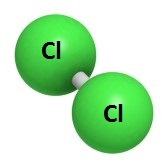
35.5 CI chlorine izci 2,8,7 Representing ionic bonding When atoms react.

Differences between experimental and theoretical details are discussed. The proton has a positive charge so the sodium atom has now become a positively. Theoretical reaction channels are also accounted for, optimized under M06-2X/6-31 + G(d,p) level and ionization potentials of products are calculated under M06-2X/6-31 + G(d,p) level also. And experimental ionization potentials are procured for direct adducts of methyl methacrylate to be 8.30 eV and for that of ethyl acrylate to be 9.95 eV which are well consistent with theoretical ionization potentials of likely isomers. The direct or indirect products are detected, indicating secondary reactions. Products are distinguished, C5H8O2Cl for addition, and C5H7O2, C5H7O2Cl and C5H9O2Cl for abstraction. 248 nm laser radiation is used to initiate the reaction. There are also tutorials on the first thirty-six elements of the periodic table. 263-269 ISSN: 0045-6535 Subject: chlorine, energy, esters, gases, ionization, isomers, spectrometers, ultraviolet radiation Abstract: Reactions between chlorine and unsaturated esters in gas phase are examined in a slow-flow reaction tube inside the laboratory-built photoionization mass spectrometer at the energy range of 8–11 eV. Chlorine atomic orbital and chemical bonding information. Phenom., 1980, 21, 275.Investigation into reactions of methyl methacrylate and ethyl acrylate with chlorine atom Author: Xuan Lin, Zhaohui Li, Yepeng Yu, Jun Chen, Qinghui Meng, Hang Zhang, Xiaobin Shan, Fuyi Liu, Liusi Sheng Source: Chemosphere 2019 v.221 pp. Chlorine atom abstraction from alpha- and beta-chloroepoxides by the triphenyltin radical Miscellaneous Krosley, K The relative rates of hydrogen atom abstraction from meta- and para-substituted toluenes under conditions of benzylic bromination by bromotrichloromethane were determined at 70degreesC. With another chlorine atom it forms a covalent bond, forming Cl2 Cl2 is nonpolar, since both ends of the bond have the same electronegativity. the molecule of sodium chloride contained two sodium and two chlorine atoms. Answer (1 of 2): To make a bond you need at least two atoms. Mårtensson, "Core-Level Binding Energies in Metals," J. the chlorine atom is thirty - five and a half times as heavy as the atom of. Lide, (Ed.) in Chemical Rubber Company handbook of chemistry and physics, CRC Press, Boca Raton, Florida, USA, 81st edition, 2000. Ley, Eds., Photoemission in Solids I: General Principles (Springer-Verlag, Berlin) with additional corrections, 1978. Burr, "Reevaluation of X-Ray Atomic Energy Levels," Rev. Chlorine connects to a Socket REPL and adds. They are tabulated elsewhere on the WWW (reference 4) and in paper form (reference 5). Socket-REPL integration with Clojure and ClojureScript with Atom. By adding one more electron we get a negatively charged Cl- ion with a net. The data are adapted from references 1-3. When a sodium atom transfers an electron to a chlorine atom, forming a sodium cation (Na+) and a chloride anion (Cl-), both ions have complete valence. A neutral chlorine atom, for example, contains 17 protons and 17 electrons. I am grateful to Gwyn Williams (Jefferson Laboratory, Virginia, USA) who provided the electron binding energy data. The binding energies are quoted relative to the vacuum level for rare gases and H 2, N 2, O 2, F 2, and Cl 2 molecules relative to the Fermi level for metals and relative to the top of the valence band for semiconductors.

All values of electron binding energies are given in eV. 1967, 47, 1300.Įlectron binding energies Electron binding energies for chlorine. Chlorine is a yellow-green gas at room temperature.

The second-lightest of the halogens, it appears between fluorine and bromine in the periodic table and its properties are mostly intermediate between them. These effective nuclear charges, Z eff, are adapted from the following references: Chlorine is a chemical element with the symbol Cl and atomic number 17. Diagram of the nuclear composition and electron configuration of an atom of chlorine-35 (atomic number: 17), the most common isotope of this. Effective nuclear charges for chlorine 1s


 0 kommentar(er)
0 kommentar(er)
